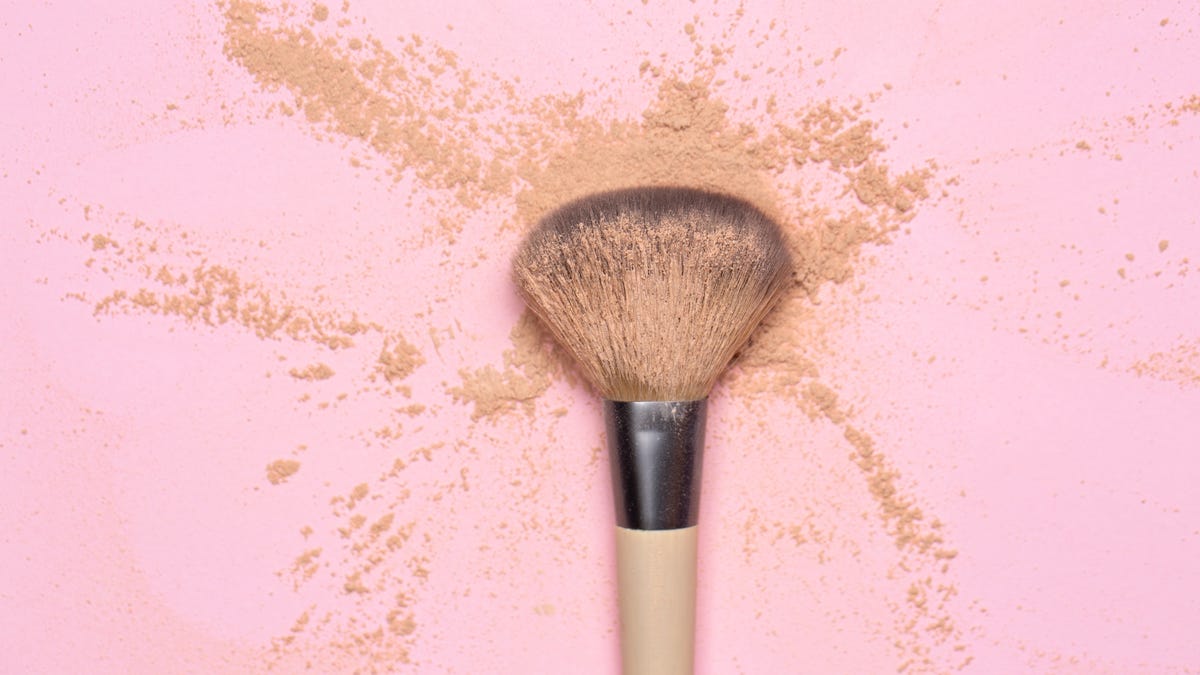 Why You Can Trust CNET
Why You Can Trust CNET How Often Should You Clean Your Makeup Brushes? We'll Explain
Your makeup tools can be a breeding ground for bacteria. Stop touching your face with them.

Keep your makeup brushes clean.
When was the last time you cleaned your foundation brush or concealer sponge that you use daily? If you can't remember, it's time to give them a deep clean. The makeup tools you use on your face can harbor bacteria that can cause breakouts and even eye infections if they're not cleaned regularly. And let's be honest, the layers of foundation caked onto your brush aren't doing your skin any favors.
Makeup can only work its magic when your brushes and sponges are clean, so to get that flawless foundation finish, it's important to keep your brushes from getting too yucky.
I spoke with Dr. Robert Anolik, a fellow of the American Academy of Dermatology, for advice on cleaning makeup tools. Here's why and how you should cleanse them.
Benefits of keeping your makeup tools clean
Looking for reasons why you should keep your makeup tools clean? Here are several.
- Your makeup applies more smoothly.
- Cleaning them can help keep breakouts at bay.
- It can help prevent infections.
- Your makeup brushes will last longer.
- You won't risk ruining a new eyeshadow pallet with a dirty brush.
How often should you clean your makeup brushes and sponges?
Cleaning your brushes and sponges regularly can help prevent breakouts. Anolik recommends that you wash your makeup brushes every seven to 10 days to protect your skin and kill any harmful bacteria.
However, if you're using a makeup sponge, like a Beauty Blender, the company recommends that you clean it after each use and let it air dry -- you should never put a damp makeup sponge in a zip-close bag as it can trap moisture and harbor bacteria.
Your makeup will go on smoother if your brushes are clean.
Does not cleaning your makeup tools affect your skin?
Dirty makeup brushes can cause challenges for the skin, Anolik explains. "The brushes collect residue, dirt and oil over time but also allow an environment for growth of bacteria," he said.
Contaminated brushes can lead to blemishes on the skin through breakouts, rashes and infection. Potential infections include fungal infection, E. coli or a staph infection, which can sometimes be very serious, Anolik said.
What should you use to clean your makeup brushes?
There are several products that you may already have on hand that you can use to clean your makeup brushes and sponges. For both tools, you can use a gentle shampoo (like baby shampoo), or even Dawn dish soap.
There are also products designed specifically for cleaning makeup tools. For instance, Beauty Blender has sponge and brush cleansers, from small soap bars to liquid cleansers. You can find a variety of cleansers at your local drugstore and online retailers like Sephora and Amazon.
How to clean your makeup tools
Brushes: Start by rinsing just the tips of brushes using lukewarm water. Be careful not to get water on the handle of the brush that connects to the brush head. Anolik says this will eventually dissolve the glue that connects the brush head to the handle.
Pour a small amount of gentle shampoo or Dawn dish soap into the palm of your hand and gently swirl the brush tips around your hand. You can also use a brush cleaning mat. You'll start to see all the foundation and concealer melting away from your brush as you do this. Run the brush under water and repeat the cycle a few times until the water runs clear while rinsing.
Now it's time to let your brush dry. You can speed up the process by using a washcloth to squeeze the excess water out. After doing this, you'll need to reshape the brush and lay it out to dry with the tips hanging off the edge of the surface. This is to prevent one side from becoming flat.
Sponges: Start by running your makeup sponge under warm water until it's saturated. Use a gentle cleanser, like baby shampoo or Dawn dish soap, and gently massage it into the sponge. Rinse it under warm water and squeeze out any excess cleanser. Once you're finished rinsing it, squeeze out the water and let it continue to air dry.
That's it! Once you start a routine of cleaning your brushes regularly, the process will be much shorter.
For more, check out these makeup organizers to declutter your bathroom. Also, here's how to get stubborn makeup stains out of bedding.

